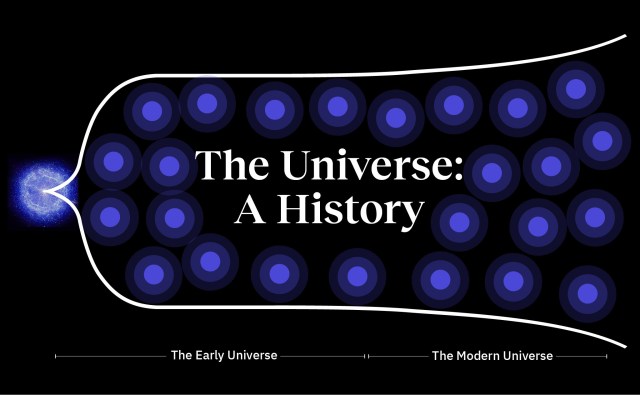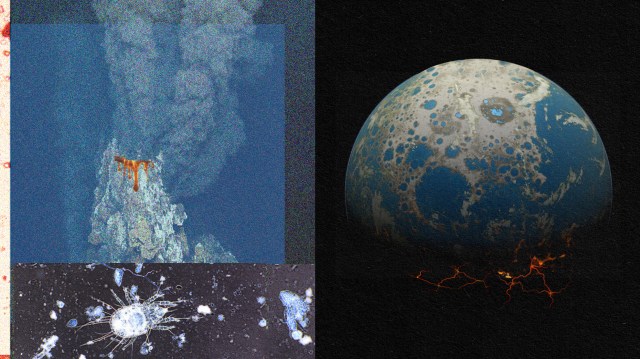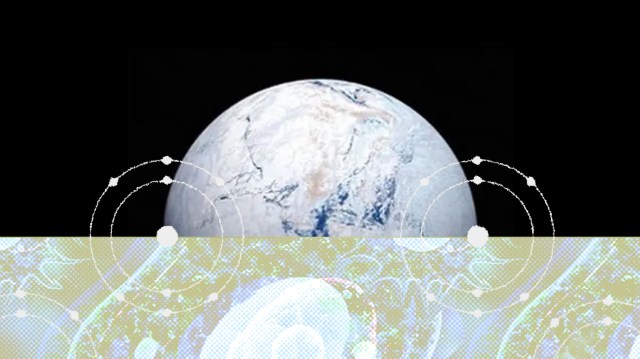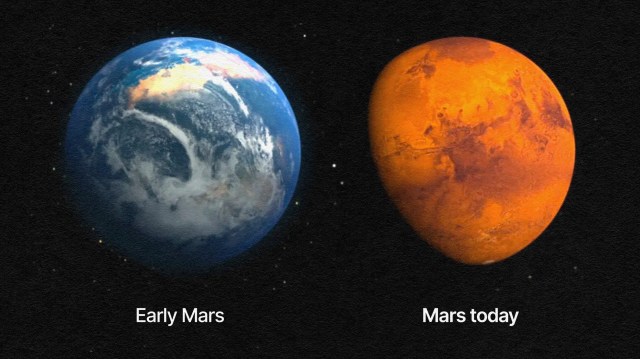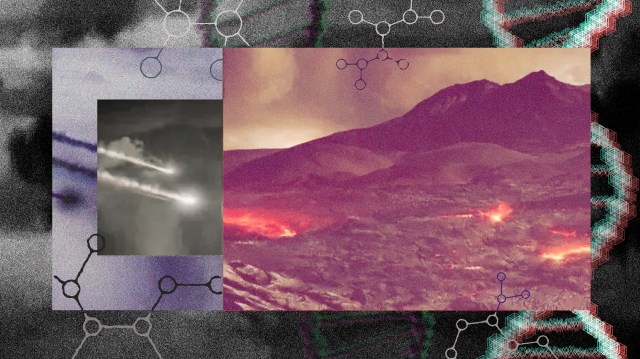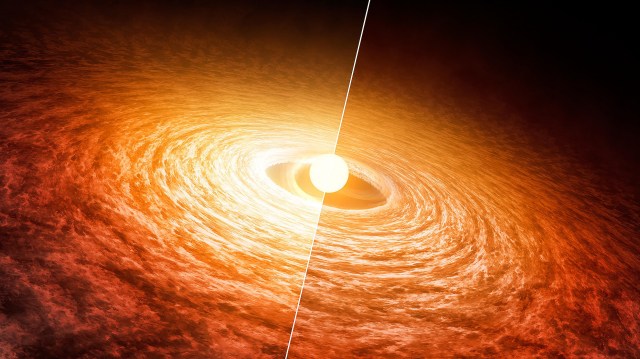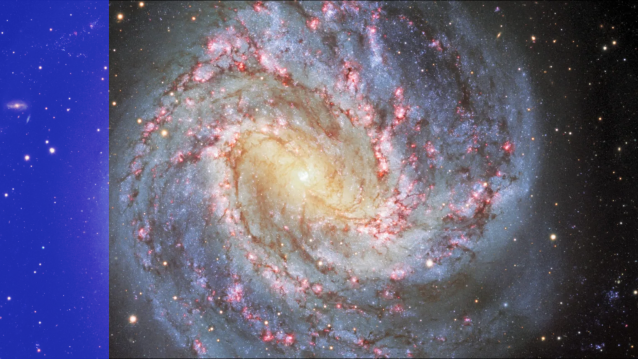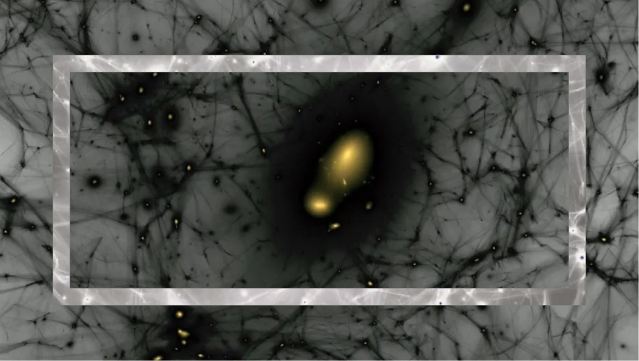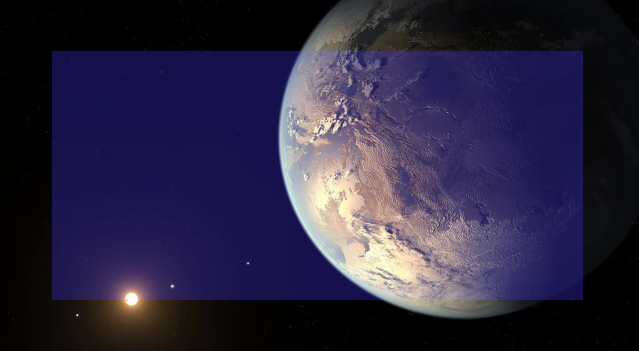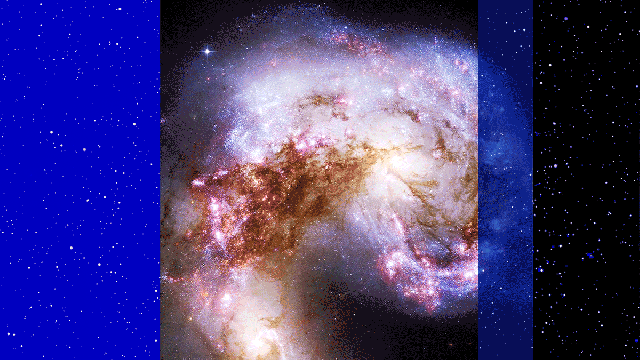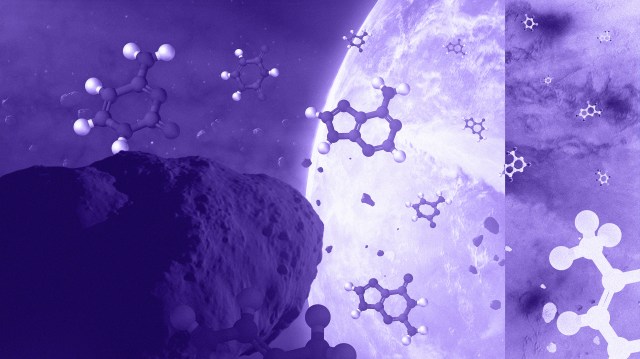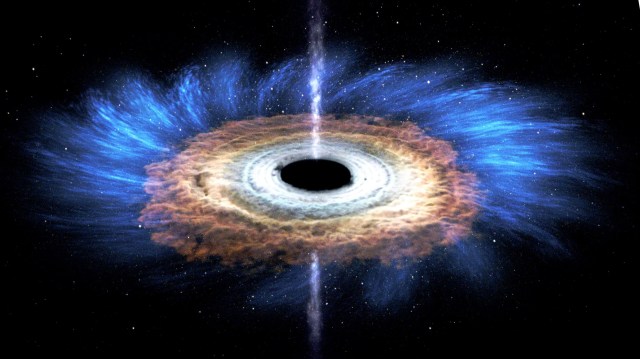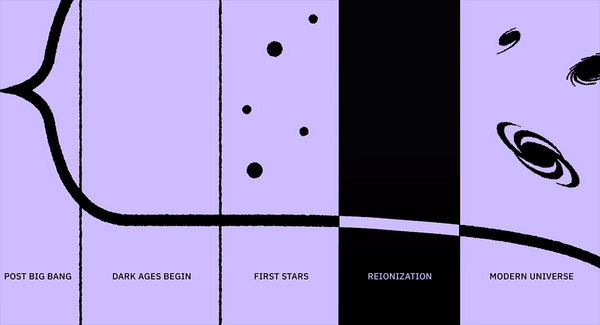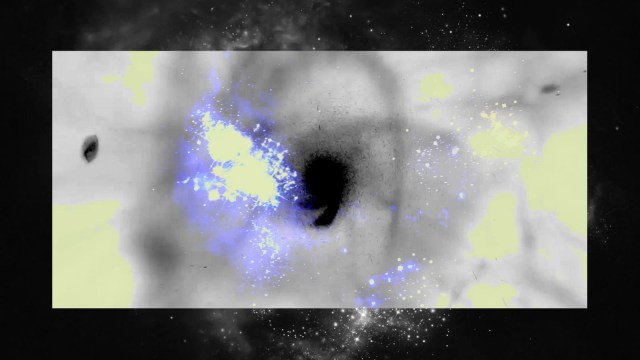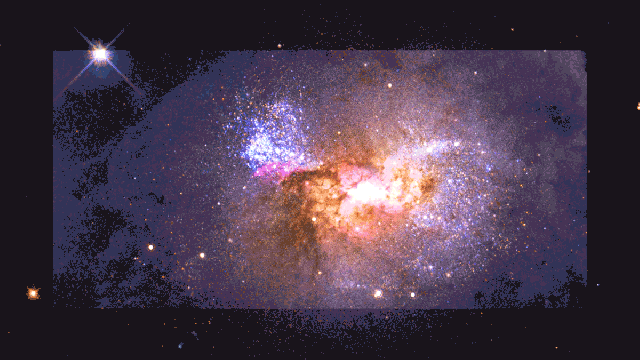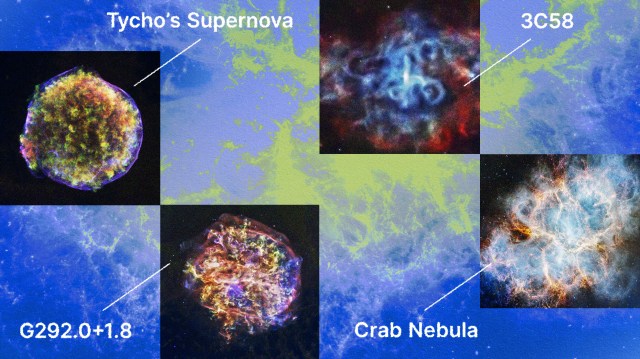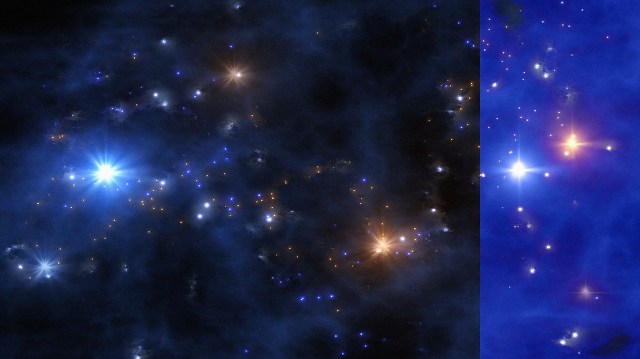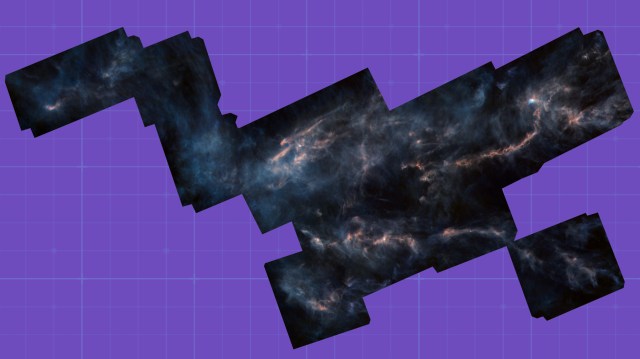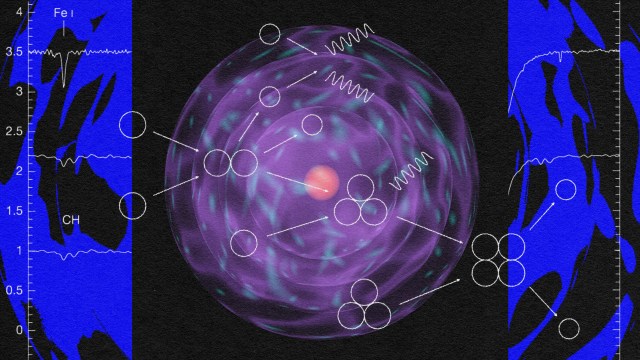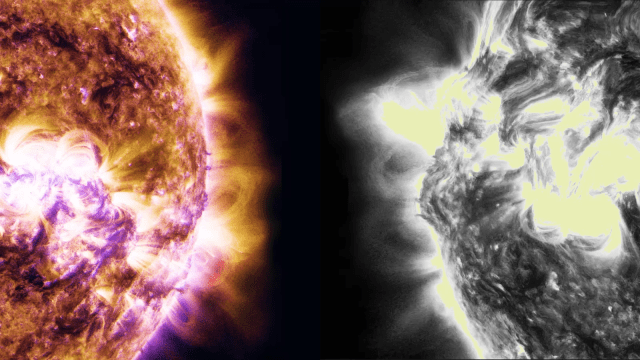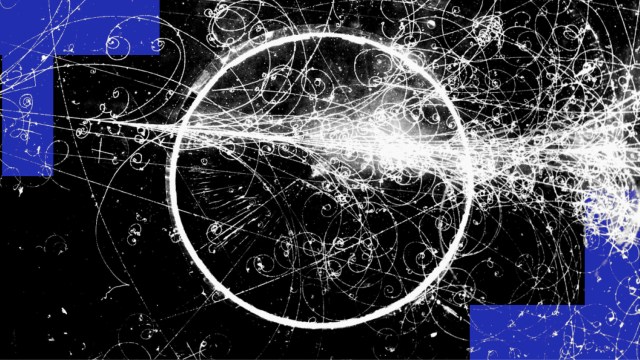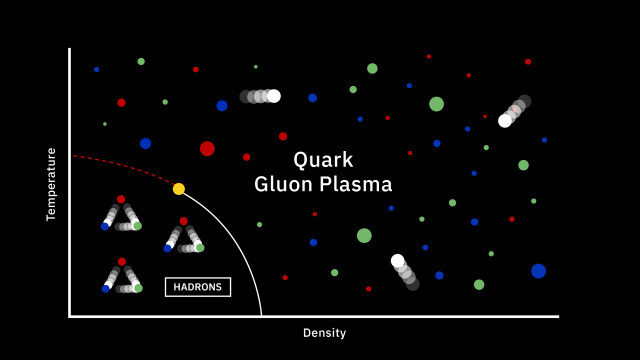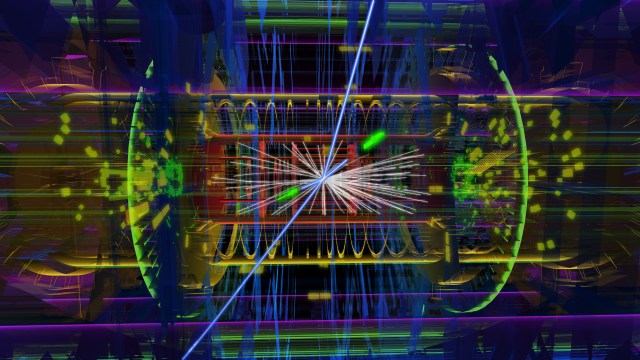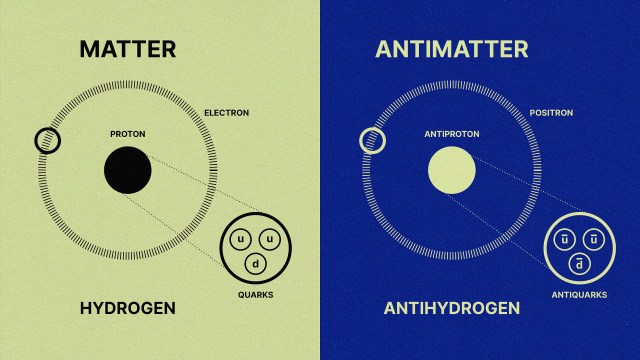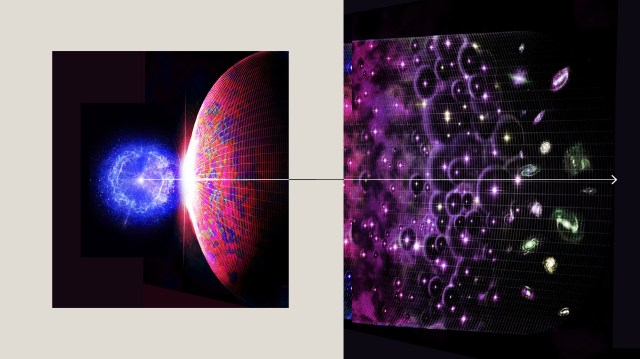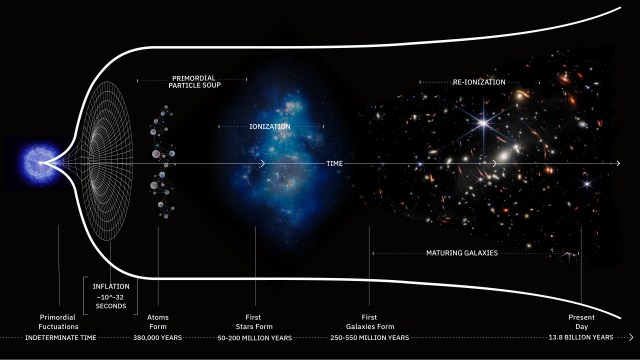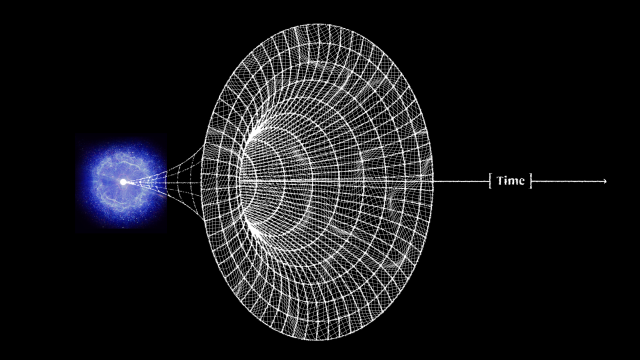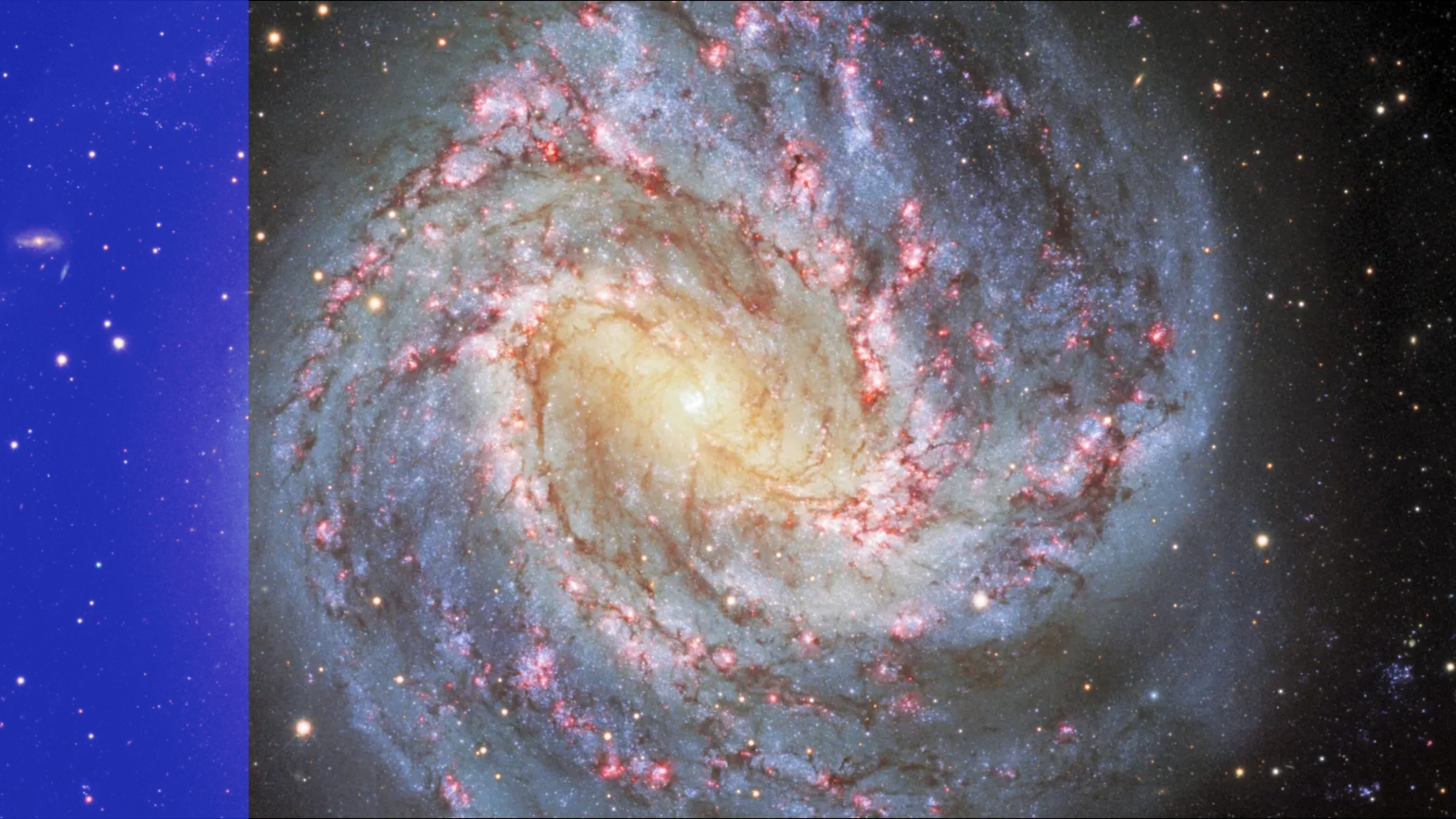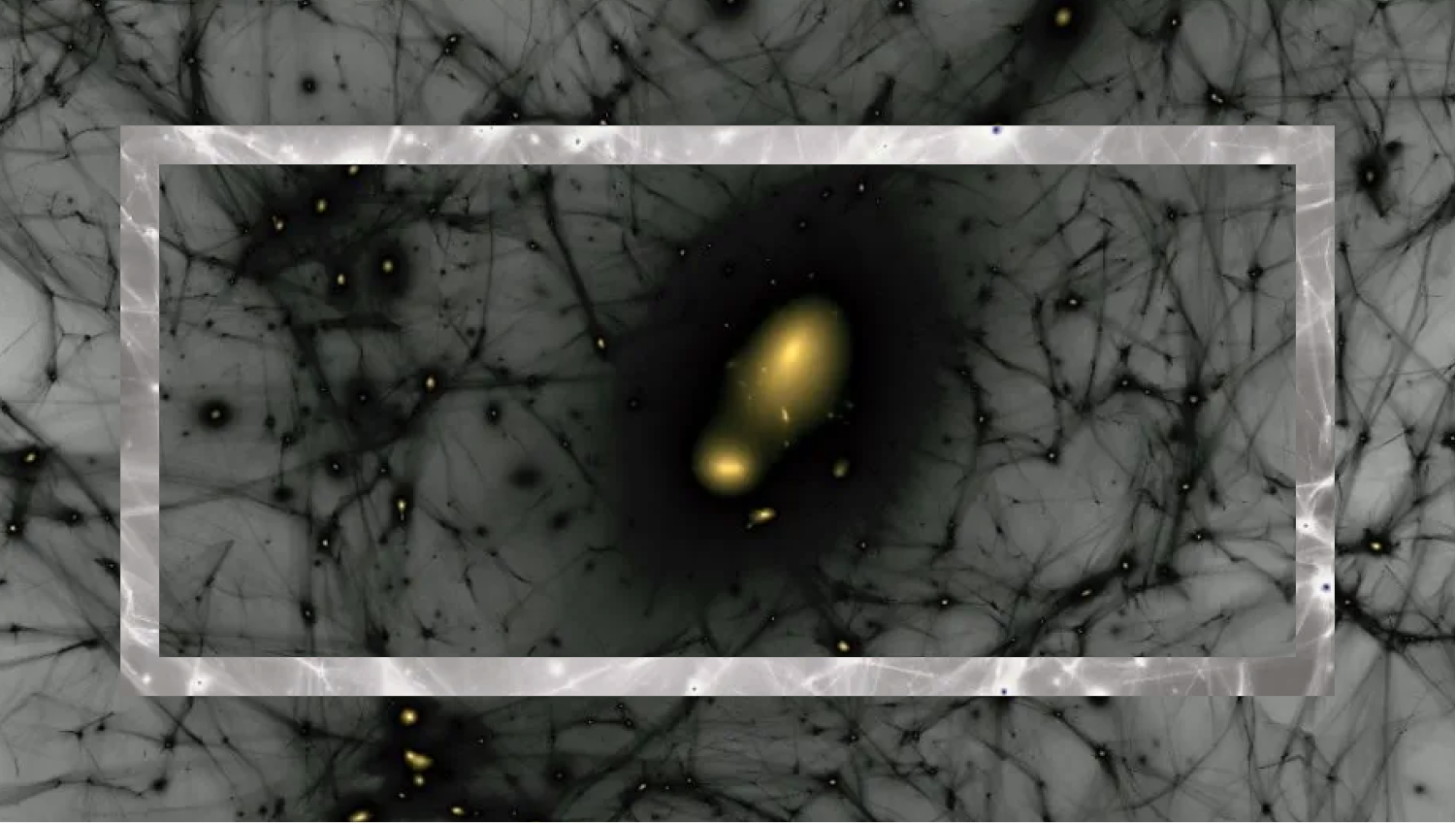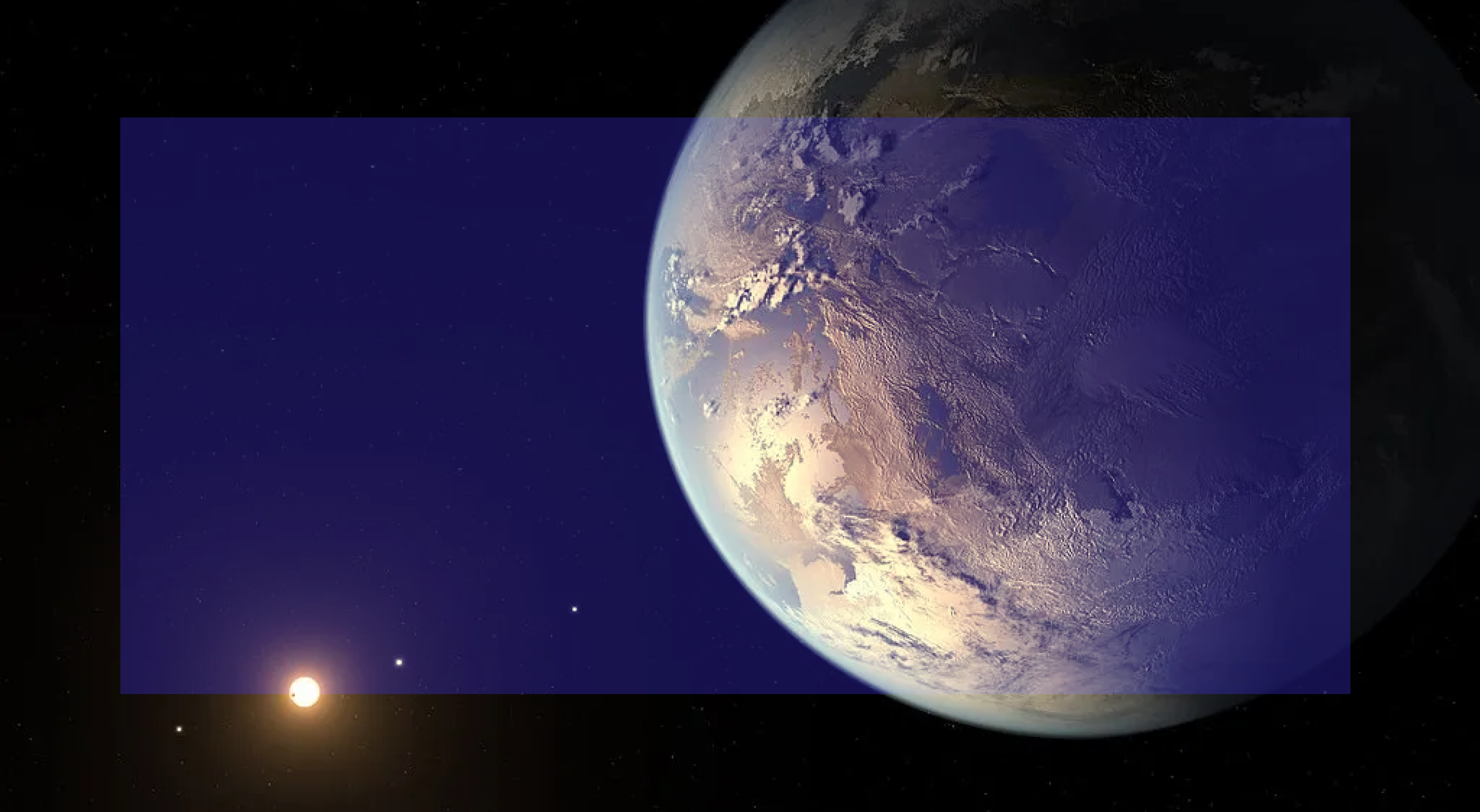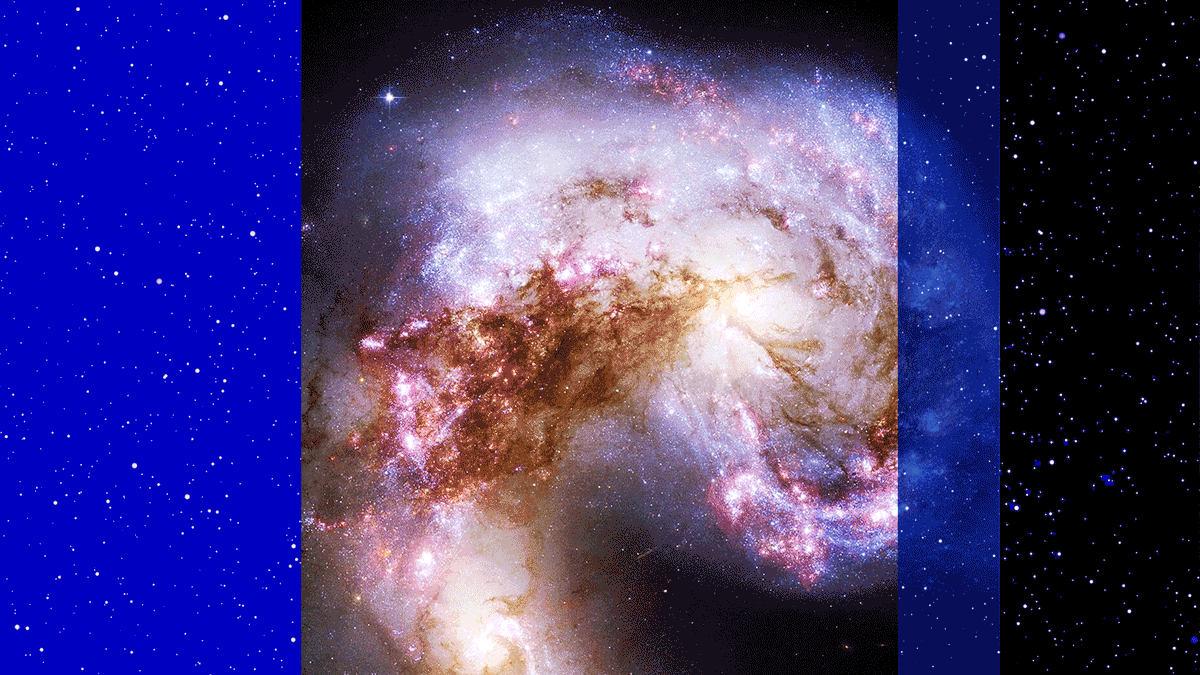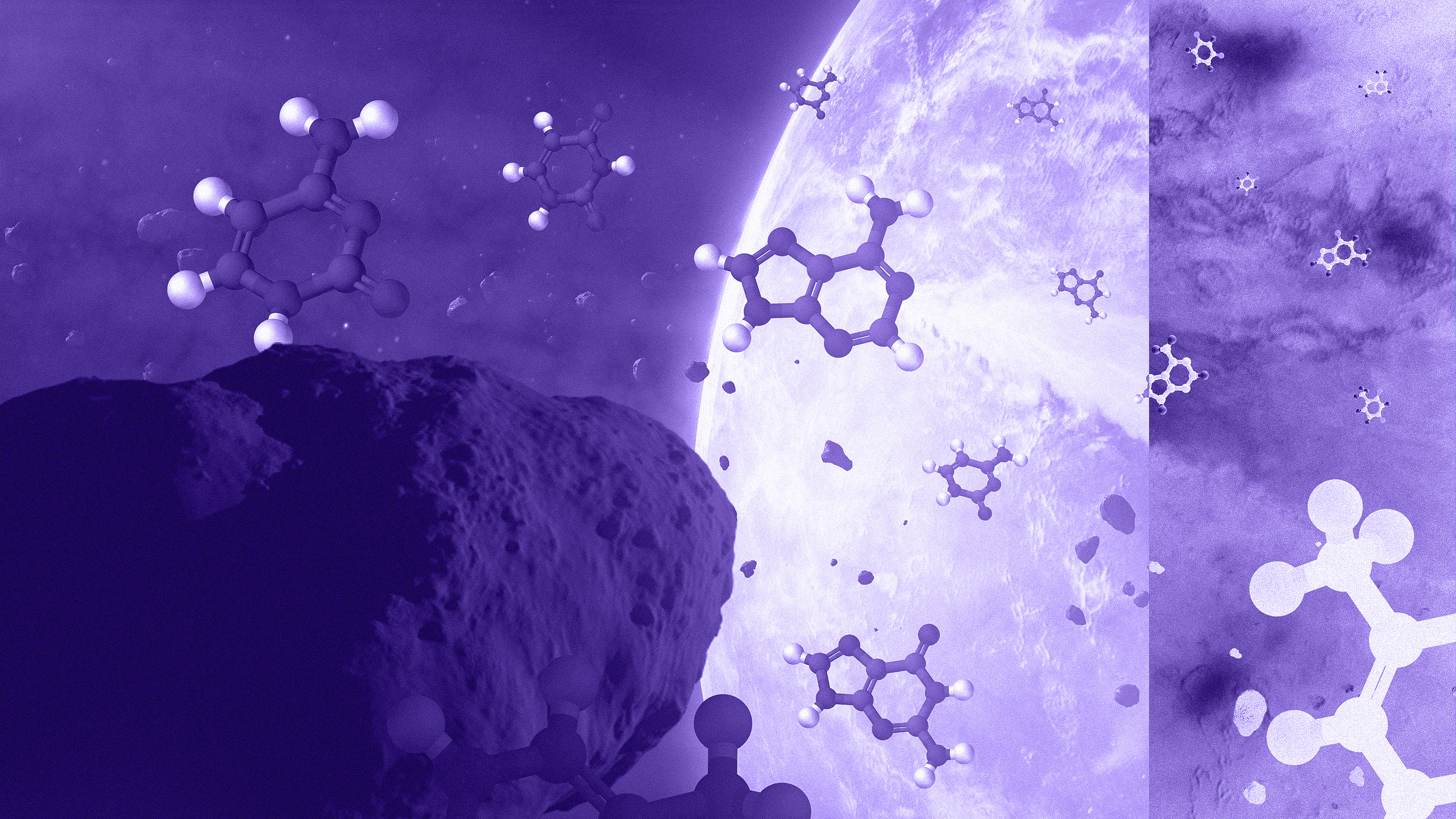What was it like when dark energy rose to prominence?
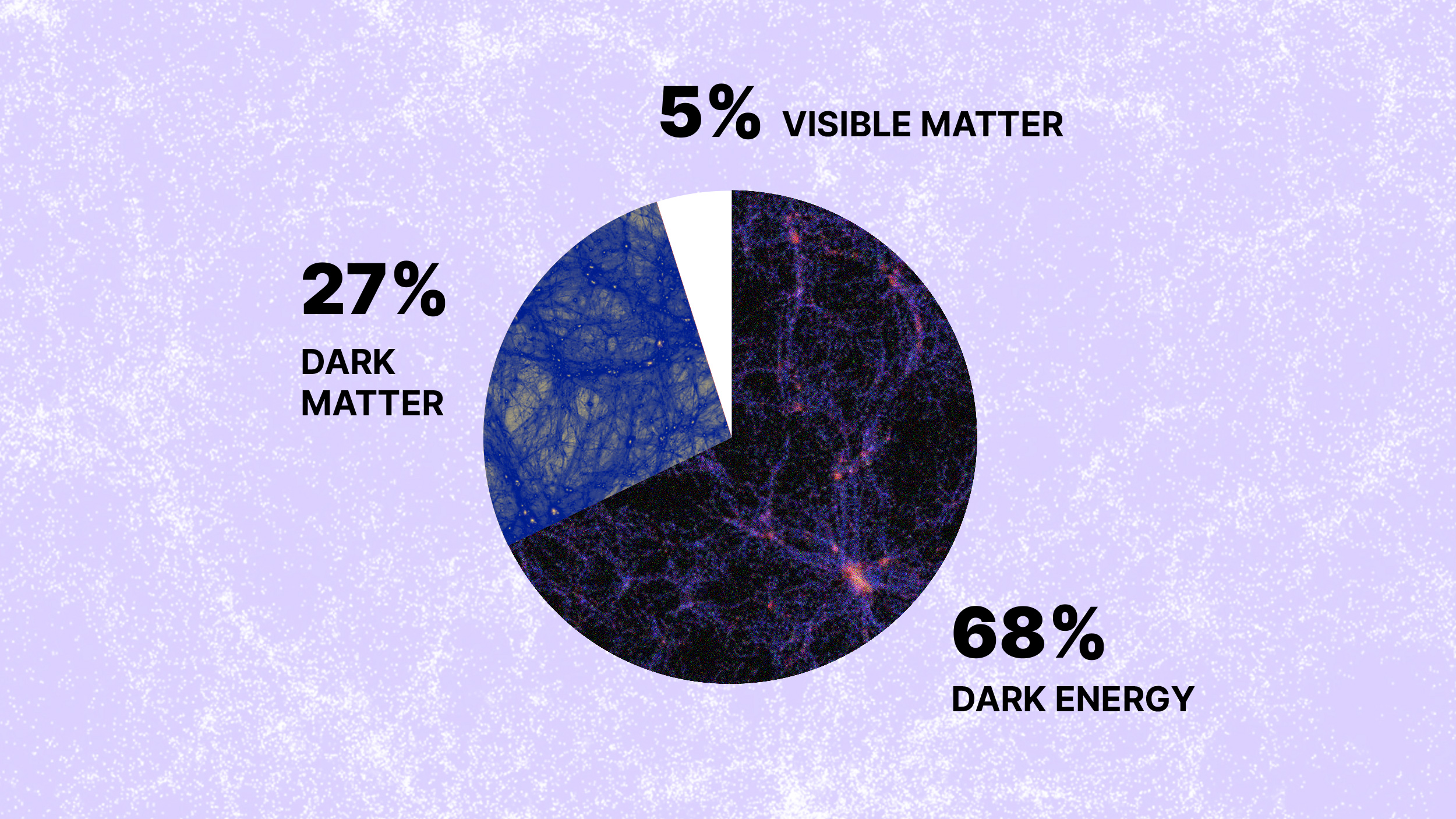
- Early on, the Universe behaved as though it were made solely of matter and radiation, with no effects from dark energy appearing from the first fractions-of-a-second to the first several billion years.
- As the Universe expanded and cooled, the densities of matter and radiation began to plummet, eventually dropping so low that a new form of energy, dark energy, became important to the Universe’s evolution.
- As dark energy rises to prominence, the expanding Universe’s behavior changes dramatically, and structure on the largest scales stops gravitationally growing and instead gets torn apart. Here’s the cosmic story behind it.
Imagine looking out at the Universe: beyond the stars of the Milky Way and the nearest galaxies to us, all the way to the most distant objects we can find. When we do exactly that, examining the galaxies, quasars, and other forms of matter that appear billions of light-years away, we’re seeing those objects not as they are today, but as they were in the distant past: back when their light was first emitted. At those earlier times, the Universe was hotter, denser, and filled with smaller, younger, less-evolved galaxies. The light we see from way back in our Universe’s history only arrives at our eyes after journeying across these vast cosmic distances, and only after that light has been stretched by the expanding fabric of space.
It’s precisely these early signals, and the process of how that light gets stretched to longer wavelengths — i.e., redshifted — more severely as we look to more and more distant objects, that teach us how the Universe has expanded throughout its history. We learned, by collecting that data, that the Universe wasn’t just expanding, but that distant objects appear to speed up, faster and faster, as they mutually recede from one another: the discovery of the accelerated expansion of the Universe. That’s how we discovered dark energy and measured its properties, changing our conception of the Universe forever. Here’s what it was like when dark energy first took over the expanding Universe.
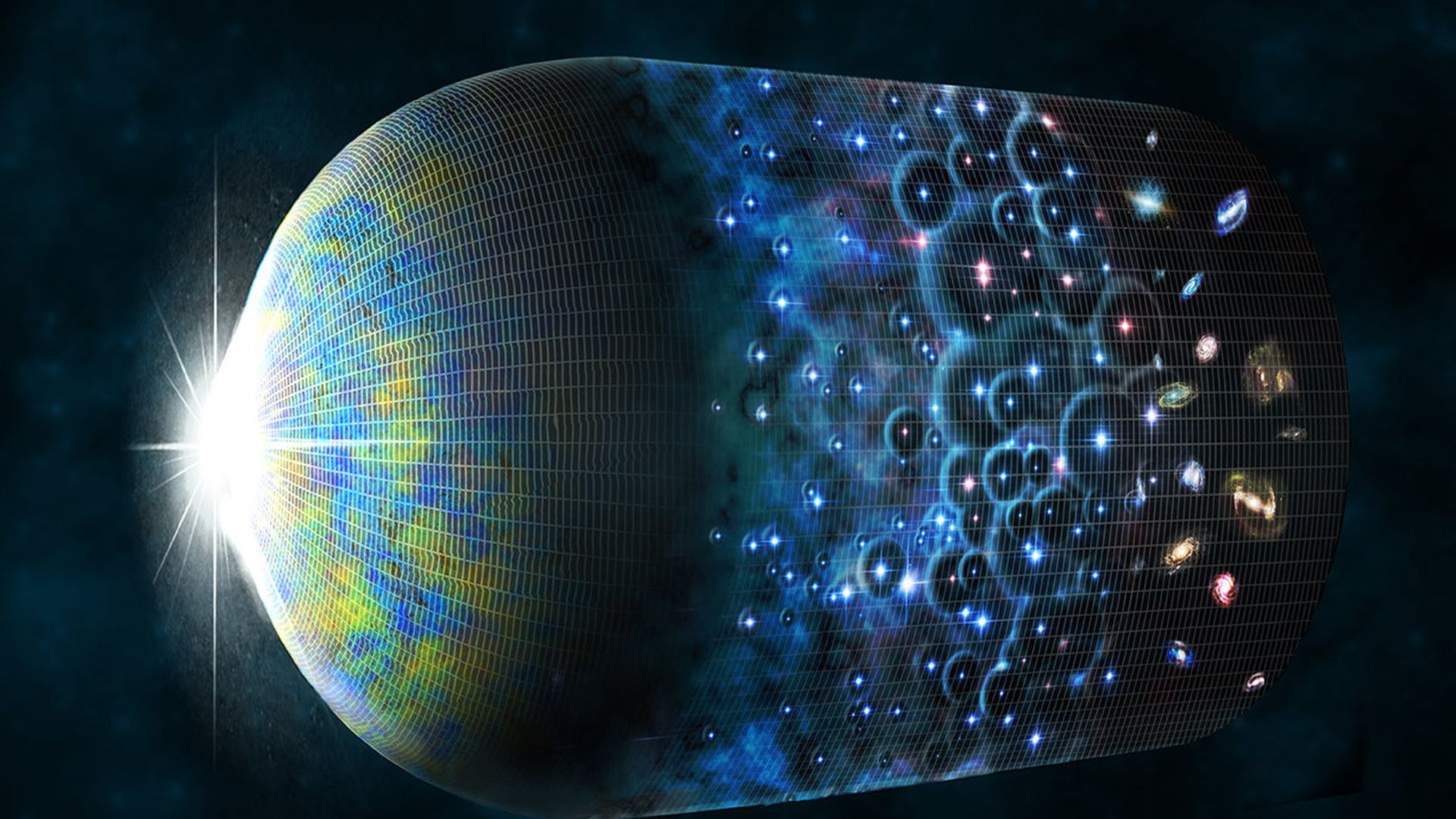
Imagine that you weren’t a human being, but rather an omniscient being that was not only around during the earliest moments of the hot Big Bang, but was capable of keeping track of two different locations at all times. One of those locations would correspond to the eventual location that our Milky Way would wind up in, today, while the other would correspond to a distant, disconnected galaxy that wasn’t gravitationally bound to anything in the Milky Way’s vicinity: not the Local Group, not the Virgo Cluster, not any component of Laniakea, etc.
If you started off knowing those locations and kept track of them from the hot Big Bang’s beginnings until the present day, what would you observe? The answer is that those two locations would expand away from one another, and not only the rate of cosmic expansion but the properties of those regions, including what they would see, would both change over time.
Initially, no light signals would be able to freely propagate from one region to the other; you’d have to wait until the Universe reached an age of 380,000 years old, as that was when the Universe became transparent to light. The cosmic microwave background, initially visible, would fade to infrared and then microwave wavelengths. As time continued to pass, you’d see molecular clouds form and contract, followed by stars and black holes forming in a slew of early nebulae, followed by the mergers of star clusters, leading to proto-galaxies. Those proto-galaxies would then merge, gravitate, and grow, evolving into full-fledged galaxies that came to exist within groups and clusters. Eventually, those early galaxies would evolve into the more familiar modern-day galaxies, going through long, quiet eras punctuated by bursts of star-formation.

That’s what the Universe itself would be like, not just where the Milky Way and a random distant galaxy would be located, but all across the vast expanse of space. One of the things we don’t typically talk about, however, is what we would see as far as the redshift of these distant objects is concerned. One of the great properties of the Universe is that the laws of physics appear to be constant: unchanging throughout time. This means that atoms always have and always will absorb and emit light at very specific wavelengths: wavelengths that are the same everywhere, and determined by the energy levels that the electrons within the atom occupy.
By identifying series of atomic absorption or emission lines that correspond to the same element, we can then measure how our observations are shifted in wavelength relative to the wavelengths we’d observe if that same atom were at rest in a laboratory. The shift, known as a redshift if it gets stretched to longer wavelengths or a blueshift if it gets compressed to shorter wavelengths, is almost always observed to be a redshift for distant galaxies, with redshift generally increasing with distance. By measuring both of those properties — redshift and distance together — across a wide enough array of objects with different properties, we can use those measurements to reconstruct the history of the expanding Universe.

In our actual reality, we aren’t omniscient, nor can we be everywhere at once: we can only make observations at one point in space-and-time: here and now, which is the location and moment at which the light from all the distant objects visible throughout the Universe finally reaches us. But, perhaps remarkably, that very exercise — of measuring the distance and redshift of a wide variety of objects across the Universe — allows us to infer the answer to our initial hypothetical scenario of how two points in space, one corresponding to ourselves and one corresponding to a distant, unbound galaxy, recede from one another across cosmic time.
The reason is simple: when we observe the light from a relatively nearby galaxy, its light is redshifted by an amount that corresponds to the amount the Universe has expanded from when that light was emitted until we observe it. The light from a slightly more distant galaxy is redshifted by a slightly greater amount: by the same amount as the nearer galaxy plus the additional amount of expansion that occurred due to its greater distance. As we accumulate more objects at greater and greater distances, we can use that data to construct a curve that teaches us how the Universe has expanded over its cosmic history.
And, because the way the Universe expands over its cosmic history is related to and determined by the different forms of energy that are present throughout the Universe over its history, we can then learn what the Universe is made of as well.

Once we know what the Universe is made of, we can use the information we have about how various forms of energy evolve with time to answer that initial question: what we would see if we could track a single, individual galaxy’s distance and redshift (as seen from our perspective) throughout the history of the Universe. The answer may be a little counterintuitive, but it’s tremendously illustrative and educational as far as shedding light on not only what dark energy is, but how it affects the expansion of the Universe.
In the earliest stages, the light that first arrived from a distant object would tell you its distance and its redshift. Compared to what we see today, the distance to that object would have been relatively small, while the redshift that would have been observed would have been quite large compared to what we see today. That redshift, if we interpret it as a Doppler shift, can be made to correspond to an apparent recession speed: how quickly the object in question appears to be moving away from us.
In reality, it isn’t that the object’s motion is causing the redshift, although motion toward (blueshift) or away from (redshift) an observer can certainly cause that effect. Instead, it’s the fact that the light is traveling through the fabric of space — and that the fabric expands while the light travels — that causes the redshift we observe.

Initially, the distances to other extragalactic objects would be small while the redshifts would be large: we would infer that this distant galaxy is speeding away from us at a very rapid rate. But as we allow the clock to run forward, both the distances to and the inferred velocity of those objects would change by significant amounts, but in opposite directions from one another.
- The distances get larger and larger over time, as the Universe continues to expand. This pushes all objects that aren’t gravitationally bound mutually away from one another, increasing the measured distance between them. From the perspective of any one galaxy, all distant, unbound galaxies continue to move farther and farther away as time goes on.
- The Universe’s expansion rate changes, and it changes dependent on the total matter and energy density present in the Universe. Since an increasing volume means a decreasing energy density, the expansion rate drops, and the distant galaxy appears to move away from us at a slower and slower speed, as though the initial expansion drove things apart, and gravity attempts, however unsuccessfully, to pull them back together.
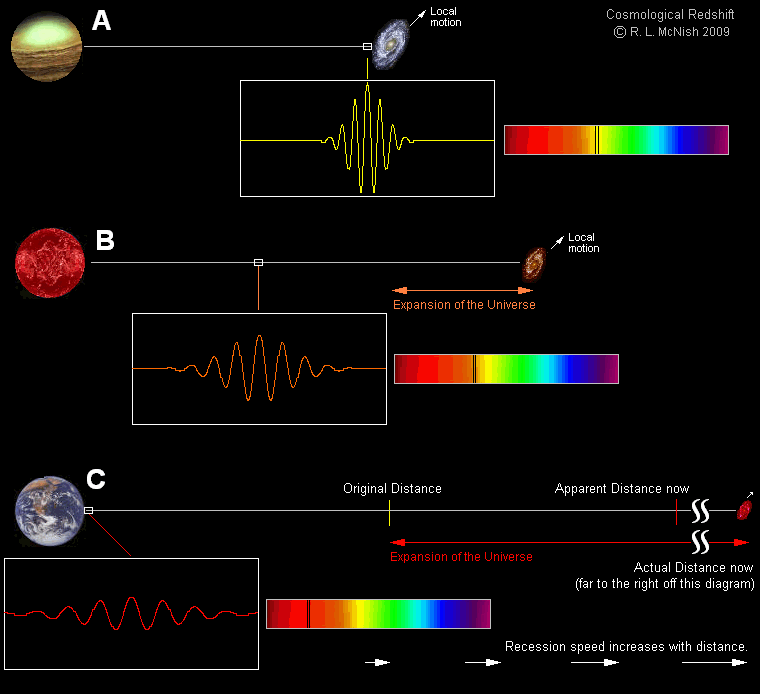
This makes sense when you think about the expanding Universe in the context of the Big Bang. There is a great cosmic race going on: between gravity, working to pull everything back together, and the initial expansion rate, working to drive everything apart. The race has been underway for 13.8 billion years, and the Big Bang was the starting gun. Everything in the Universe begins moving away from everything else initially, at an extremely rapid rate to start, while gravity works as hard as it can to pull everything back together. You can imagine multiple possible fates for how things would turn out.
- If there were too much matter in the Universe, everything would expand only until a point, as the Universe reached a maximum size and then the expansion reversed, and things began contracting. Eventually, the Universe would recollapse, and everything would end in a Big Crunch.
- On the other hand, if there were too little matter, the expansion would continue forever, with the expansion rate decreasing but never stopping or reversing, while the apparent recession velocities would forever decrease but never reach zero.
- Or you could imagine what we call a “Goldilocks” case: where the Universe lived on the border between those two prior scenarios. The Universe would expand forever, but the expansion rate would approach zero. If there were one more atom in the Universe, it would recollapse, but without that atom, things just keep expanding, albeit as slowly as the laws of physics allow.
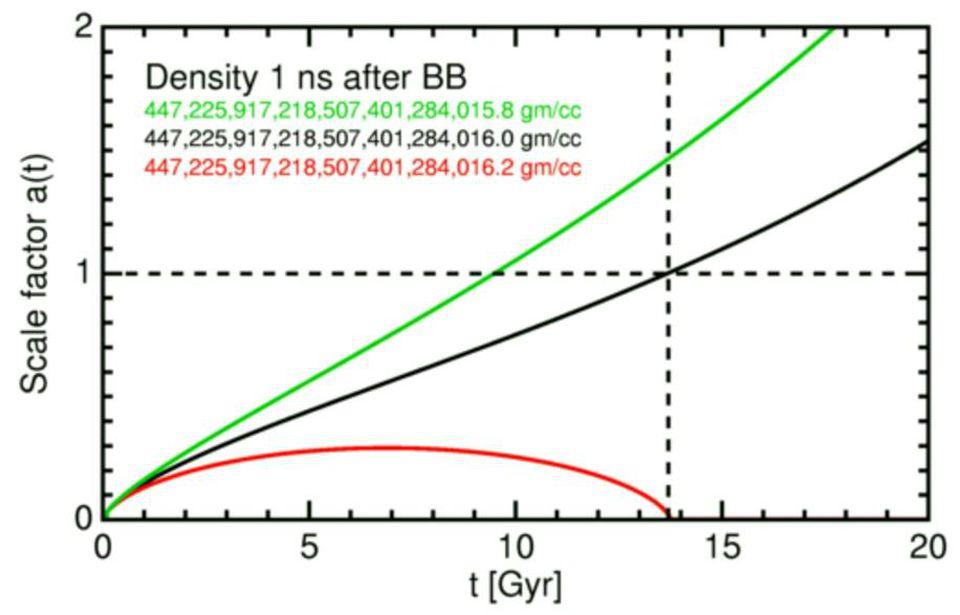
That last case was consistent with what we’d see happening for a long time: for billions of years, in the case of our Universe. An individual galaxy appears to move away from us at an incredibly fast rate, but then its recession velocity drops as the matter and radiation densities drop. Since it’s the total energy density at any particular instant that determines the Universe’s expansion rate, and the expansion rate in turn determines what we infer the recession speed of a galaxy to be, this all makes intuitive sense.
But after a few billion years, something fishy begins to occur. Instead of approaching zero, the expansion rate starts to decrease at a slower rate than one would expect, and a distant galaxy’s recession speed doesn’t drop in the same fashion anymore. Once the Universe reaches an age that’s 7.8 billion years after the Big Bang, things start to get weird: these distant galaxies stop slowing down in their recession entirely, and appear to “coast” in the sense that they move away from us at a constant speed from moment-to-moment, as though the expansion had stopped decelerating.
And then, as the Universe continues to age, the recession speeds no longer remain constant, nor do they go back to decreasing. Instead, these distant galaxies appear to recede from us (and one another) more and more quickly. It’s as though some effect is causing the expansion to neither decelerate nor remain constant, but to actually increase and accelerate!

This data, and these observations, teach us something profound: the Universe cannot simply be filled with merely matter and radiation. Even adding in neutrinos, black holes, dark matter and more won’t allow us to successfully account for everything. In addition to all of those entities, we also require something novel, known as dark energy: a form of energy inherent to space itself. As the Universe expands, dark energy doesn’t dilute, but rather remains at a constant density. Everything else, including all forms of matter and radiation, dilute as the Universe expands, as the number of particles remains fixed but the volume they occupy increases: a consequence of the expanding Universe. Only dark energy, inherent to space itself, remains at a constant energy density.
After 7.8 billion years, the matter density drops far enough that the effects of dark energy begin to become important. 7.8 billion years after the Big Bang, when the dark energy density has grown to be as large as half the matter density, it reaches the critical value to cause a distant galaxy to stop decelerating from our perspective, and begin accelerating instead. This is a critical time: the repulsive effects of dark energy on the Universe’s expansion exactly counteract the attractive effects of matter.
But time doesn’t stop here. Instead, it continues forward, and the matter density continues to drop. Once 7.8 billion years on the cosmic clock ticks by, dark energy now becomes more important than matter and radiation as far as the expansion rate is concerned. Distant galaxies reached their minimum recession speed at that time, but then will appear to speed up once again.

As time marches forward, distant objects not bound to one another will recede from each other’s perspective at a faster and faster rate. By the time the Universe is 9.2 billion years old, right when our Solar System is forming, the matter density will have dropped below the dark energy density. By the present day, 13.8 billion years after the Big Bang, dark energy accounts for approximately 70% of the total energy in the Universe; when the Universe reaches twice its present age, dark energy will account for over 95% of the Universe’s total energy. Throughout all that time, distant galaxies will continue to speed up, faster and faster, in their apparent recession from our perspective.
For the past 6 billion years, the Universe’s expansion has been accelerating, meaning that any distant galaxy we monitor appears to recede from us at an ever-increasing speed. Any galaxy currently at a distance of approximately 18 billion light-years from us now appears to recede away faster than the speed of light, meaning there’s nothing we can ever do to reach or contact it again. Given that the Universe is already 46 billion light-years in radius, this means that 94% of the galaxies in the Universe are already forever beyond our reach.
For billions of years, dark energy’s density would have been tiny compared to the density of matter, meaning its effects would have been undetectable if humans had arisen too early. Tens of billions of years from now, dark energy will have pushed everything beyond our Local Group far away from us; the merged remains of the Local Group will be the only galaxy remaining. It’s only because we came along when we did, at this golden cosmic time, that we can perceive what the Universe is actually made of. Dark energy is real, began dominating our Universe at an age of 7.8 billion years old, and determines our cosmic fate from here on out!
